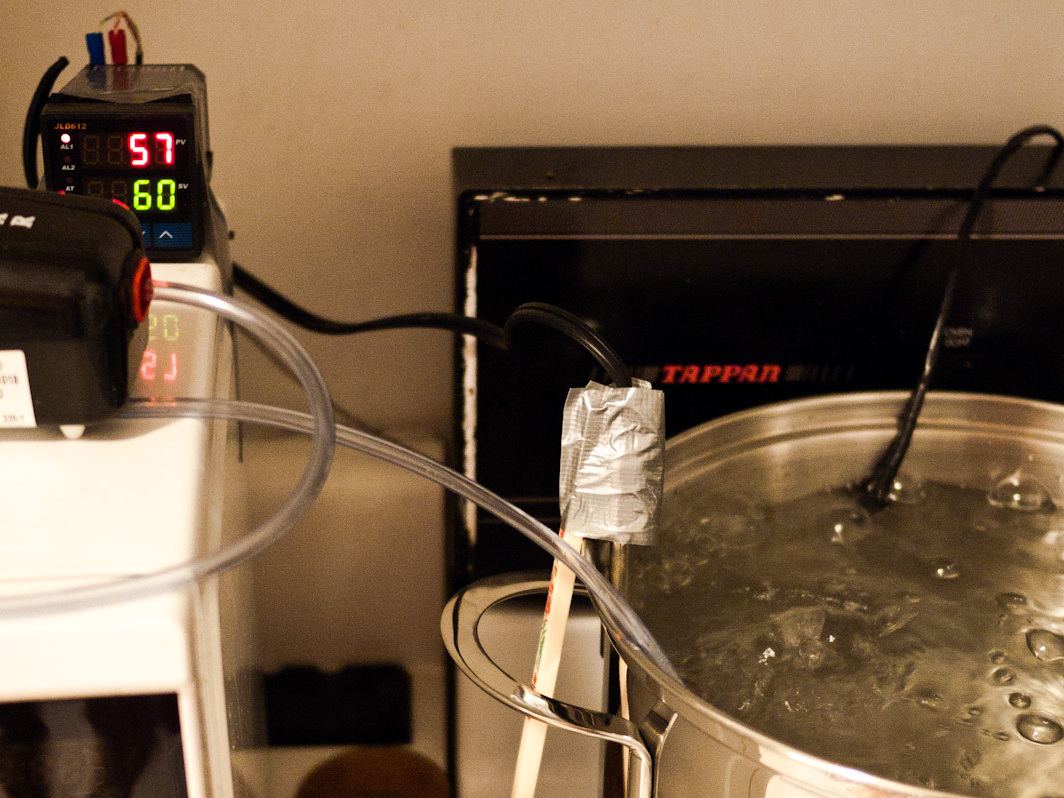See the original article on our blog.
A sous vide device shouldn’t be just a popular trend in restaurants and foodie kitchens. It can be a practical and essential addition to any home. In fact, it’s not so unlike a convection oven; the only difference is that it uses water to conduct heat and it is more precisely controlled.
Oh, right, and that a sous vide could run you a few thousand dollars… and who can fit one in their apartment? Our design can be tucked away in a grocery bag after use.
Although sous vide is incredibly useful, many cooks are still unfamiliar with it because it is cost-prohibitive. But, why should such a simple machine be so expensive? The parts can be easily acquired and connected by anyone with an hour or so to spare.
We’ve put one together and are thrilled with the consistent, perfectly-cooked, and outer-worldly results (that are impossible to achieve by any other method)! Once you’ve “sous vided” a meal, we’re pretty sure you’ll be so inspired by the deliciousness of it all that you’ll incorporate vidin’ in your everyday cooking routine.


